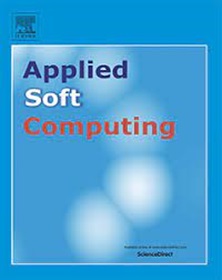Towards energy-efficient Robotic Mobile Fulfillment System: Hybrid agent-based simulation with DEA-based surrogate machine learning
IF 7.2
1区 计算机科学
Q1 COMPUTER SCIENCE, ARTIFICIAL INTELLIGENCE
引用次数: 0
Abstract
The rapid growth of retail e-commerce has increased demand for warehouses to handle large volumes and diverse SKUs. To meet these demands, Robotic Mobile Fulfillment System (RMFS) is widely adopted. However, the automation in RMFS significantly raises energy consumption. The challenge is that the dynamic complexity of RMFS operations poses a major challenge in improving energy efficiency. This research proposes a hybrid optimization model to optimize traffic policy, routing strategy, number of robots, and robot’s max speed for reducing energy consumption while maintaining throughput rate. We first formulated a realistic RMFS energy consumption. A new priority rule for traffic policy was then proposed to reduce unnecessary stoppages. Two routing strategies namely Aisles Only and Underneath Pod were evaluated. Agent-based model was finally developed. Simulation experiment shows that the proposed priority rule reduces energy consumption by 3.41 % and increases the throughput by 26.07 % compared to FCFS. Further, global optimization was performed by first unifying conflicting objectives into a single-efficiency objective using Data Envelopment Analysis. Surrogate-based machine learning was then fitted and optimized via metaheuristic algorithm. The near-optimal configuration for RMFS was achieved by implementing the Priority Rule as traffic policy, Underneath Pod as routing strategy, 26 as number of robots, and 1.372 m/s as max speed. ANOVA reveals that the number of robots is the most influential factors to overall RMFS performance.
面向节能机器人移动履约系统:基于agent的混合仿真与基于dea的代理机器学习
零售电子商务的快速发展增加了对仓库的需求,以处理大批量和多样化的sku。为了满足这些需求,机器人移动配送系统(RMFS)被广泛采用。然而,RMFS中的自动化显著提高了能源消耗。挑战在于RMFS操作的动态复杂性对提高能源效率提出了重大挑战。本研究提出一种混合优化模型,对交通策略、路由策略、机器人数量和机器人最大速度进行优化,以在保持吞吐量的同时降低能耗。我们首先制定了一个现实的RMFS能耗。然后提出了一个新的交通政策优先规则,以减少不必要的停车。评估了两种路由策略,即通道通道和下方Pod。最后建立了基于agent的模型。仿真实验表明,与FCFS相比,所提出的优先级规则能耗降低3.41 %,吞吐量提高26.07 %。此外,首先使用数据包络分析将冲突目标统一为单一效率目标,从而进行全局优化。然后通过元启发式算法对基于代理的机器学习进行拟合和优化。RMFS的接近最优配置是通过将优先级规则作为流量策略,将底层Pod作为路由策略,将26作为机器人数量,将1.372 m/s作为最大速度来实现的。方差分析表明,机器人数量是影响RMFS整体性能的最重要因素。
本文章由计算机程序翻译,如有差异,请以英文原文为准。
求助全文
约1分钟内获得全文
求助全文
来源期刊

Applied Soft Computing
工程技术-计算机:跨学科应用
CiteScore
15.80
自引率
6.90%
发文量
874
审稿时长
10.9 months
期刊介绍:
Applied Soft Computing is an international journal promoting an integrated view of soft computing to solve real life problems.The focus is to publish the highest quality research in application and convergence of the areas of Fuzzy Logic, Neural Networks, Evolutionary Computing, Rough Sets and other similar techniques to address real world complexities.
Applied Soft Computing is a rolling publication: articles are published as soon as the editor-in-chief has accepted them. Therefore, the web site will continuously be updated with new articles and the publication time will be short.
 求助内容:
求助内容: 应助结果提醒方式:
应助结果提醒方式:


